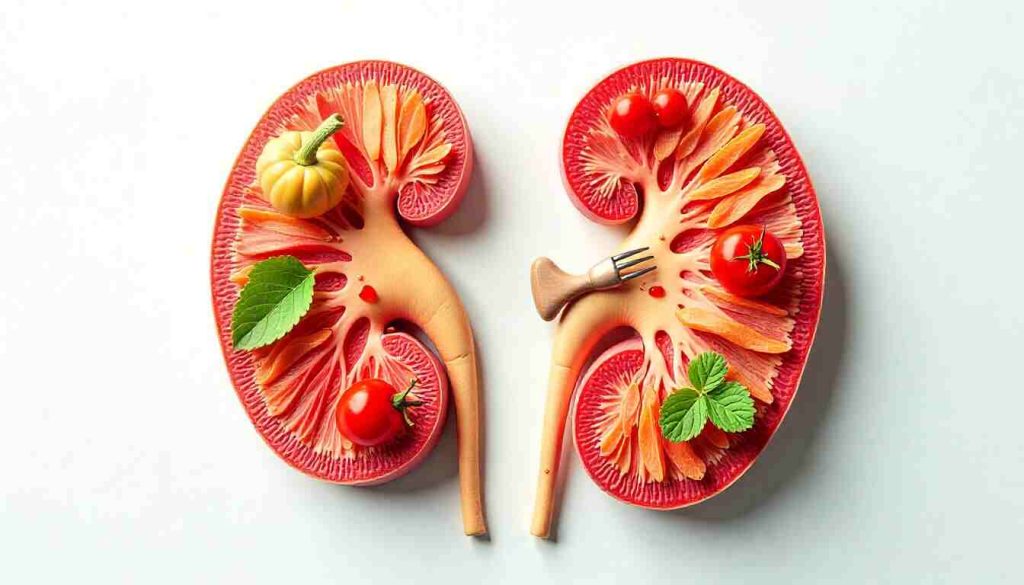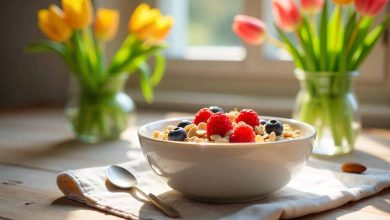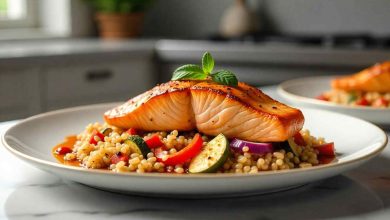Managing Renal Failure with a Low-Protein Diet: A Complete Guide for Kidney Health
Managing Renal Failure with a Low-Protein Diet
Introduction: Why Protein Matters in Kidney Disease
Renal failure, or chronic kidney disease (CKD), affects millions worldwide. When the kidneys begin to fail, their ability to filter waste and maintain fluid and electrolyte balance is compromised. One of the most important dietary changes recommended for individuals with renal failure is adopting a low-protein diet.
But why is protein a concern? And how can patients reduce protein intake without sacrificing nutrition? This guide explores the science behind low-protein diets for renal failure, what foods are allowed, and how to make smart nutritional choices to support kidney health.
Understanding Renal Failure and Its Stages
Renal failure is the end-stage of chronic kidney disease, a progressive condition where the kidneys lose their filtering function over time. CKD is classified into five stages:
-
Stage 1–2: Mild loss of kidney function
-
Stage 3: Moderate decline
-
Stage 4: Severe decrease in function
-
Stage 5 (End-Stage Renal Disease): Kidneys fail completely, often requiring dialysis or transplant
The lower the kidney function, the more the body struggles to remove waste products of protein metabolism, such as urea and creatinine. That’s where diet comes in.
Why a Low-Protein Diet Is Recommended in Renal Failure
Protein is essential for building muscle, hormones, and immune function. But when protein is broken down, it produces nitrogenous waste. Healthy kidneys filter these byproducts efficiently. Damaged kidneys? Not so much.
A low-protein diet helps:
-
Reduce urea buildup in the blood
-
Alleviate symptoms like nausea, fatigue, and loss of appetite
-
Slow the progression of kidney damage in early stages
-
Improve quality of life in those not on dialysis
However, a very low-protein diet (VLPD) is typically used only under strict medical supervision and often includes keto acid supplements to prevent malnutrition.
How Much Protein Is Safe in Renal Failure?
The amount of protein depends on the stage of CKD and whether the patient is on dialysis.
| CKD Stage | Recommended Protein Intake |
|---|---|
| Stage 1–2 | 0.8–1.0 g/kg body weight/day |
| Stage 3–4 | 0.6–0.8 g/kg/day |
| Stage 5 (no dialysis) | 0.6 g/kg/day or less |
| On dialysis | 1.2–1.4 g/kg/day (higher due to protein loss in treatment) |
📌 Example: A 70 kg (154 lb) adult with Stage 3 CKD might be advised to eat about 42–56 grams of protein per day.
What to Eat on a Low-Protein Diet for Kidney Health
A low-protein renal diet focuses on quality over quantity, prioritizing plant-based proteins and other nutrient-rich foods.
✅ Best Foods to Include:
1. Low-Protein Grains:
-
White rice
-
Pasta
-
Couscous
-
Unsalted crackers
2. Fruits and Vegetables:
-
Apples, berries, grapes
-
Cabbage, carrots, cauliflower (watch potassium)
3. Healthy Fats:
-
Olive oil, avocado (limit in high-potassium diets)
-
Unsalted butter or plant-based margarine
4. Plant-Based Protein (in moderation):
-
Tofu
-
Lentils (in limited portions)
-
Low-phosphorus soy products
5. Beverages:
-
Water (as allowed)
-
Herbal teas
-
Unsweetened almond or rice milk
Foods to Limit or Avoid on a Low-Protein Renal Diet
1. High-Protein Animal Sources:
-
Red meat
-
Poultry
-
Fish
-
Eggs
-
Dairy (cheese, milk, yogurt)
2. Processed Foods:
-
Canned soups and meats
-
Deli meats
-
Frozen meals with preservatives
3. High-Phosphorus and High-Potassium Foods:
-
Bananas, oranges
-
Potatoes (unless leached)
-
Chocolate
-
Whole grains (brown rice, bran cereals)
4. High-Sodium Products:
-
Salted snacks
-
Pickles
-
Soy sauce and seasoning mixes
Sample Low-Protein Meal Plan for Renal Failure
Here’s a sample 1-day meal plan designed for a patient with moderate kidney disease:
Breakfast:
-
½ cup unsweetened rice cereal with almond milk
-
1 slice white toast with unsalted butter
-
1 small apple
-
Herbal tea
Lunch:
-
White rice with sautéed cabbage and carrots
-
Small serving of tofu (30g)
-
Olive oil drizzle
-
Water with lemon
Snack:
-
Unsalted rice cakes
-
Handful of grapes
Dinner:
-
Pasta with low-sodium tomato sauce
-
Roasted cauliflower
-
Slice of Italian bread
-
Sugar-free gelatin for dessert
Note: Always customize portions and contents under the guidance of a registered dietitian.
The Role of a Renal Dietitian
Managing renal failure with a low-protein diet isn’t easy—especially when balancing other restrictions like potassium, phosphorus, sodium, and fluid intake.
A renal dietitian helps you:
-
Create a tailored meal plan
-
Monitor lab values
-
Prevent malnutrition
-
Adjust the diet as your condition changes
This is crucial for patients who are not yet on dialysis, as diet can significantly slow disease progression.
Risks of Too Little Protein
While protein restriction is important, over-restricting can lead to muscle loss, fatigue, and weakened immunity. This is especially true for older adults or those with other health conditions.
Signs of protein deficiency include:
-
Unexplained weight loss
-
Swelling (edema)
-
Muscle weakness
-
Frequent infections
This is why balance is key—enough protein to maintain health, but not so much that the kidneys become overburdened.
Conclusion: Balance, Not Elimination
A low-protein diet for renal failure is a proven strategy to reduce symptoms, slow disease progression, and delay the need for dialysis in many cases. However, it must be carefully balanced and personalized to your condition, lifestyle, and lab results.
With the support of your healthcare team, including a renal dietitian, you can adopt a kidney-friendly diet that nourishes your body without putting extra strain on your kidneys.
Eat smart. Stay informed. And give your kidneys the care they deserve.




